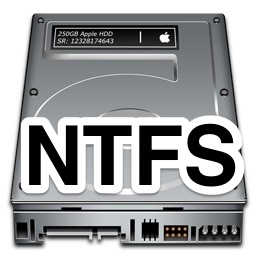 OS X has always been able to read NTFS drives, but tucked away in Mac OS X is a hidden option to enable write support to drives formatted as NTFS (NTFS stands for New Technology File System and is a proprietary file system format for Microsoft Windows). Enabling NTFS write support on the Mac is fairly technical and it’s not officially supported by Apple, making it an experimental feature that is best left in the hands of advanced users who understand the process and the potential repercussions.
OS X has always been able to read NTFS drives, but tucked away in Mac OS X is a hidden option to enable write support to drives formatted as NTFS (NTFS stands for New Technology File System and is a proprietary file system format for Microsoft Windows). Enabling NTFS write support on the Mac is fairly technical and it’s not officially supported by Apple, making it an experimental feature that is best left in the hands of advanced users who understand the process and the potential repercussions.
Because this feature is officially unsupported by Apple, NTFS should not be considered a reliable cross-platform file system for moving files between a Mac and a Windows PC, users will still want to format drives for the FAT file system for optimal Mac to/from PC drive compatibility with full read and write support (perhaps a better solution for many users would be to use samba networking and share files directly through a local network between the PC and Mac in question). Additionally, the lack of official support suggests there could be the potential for something to go wrong, either in the form of kernel panics or even theoretical data loss on the NTFS drive. Accordingly, such a feature may be best as a last resort and should not be used with important data on the Windows drive without having adequate backups of those files.
Comfortable with all of that? Great, we’ll cover two different ways to enable NTFS write support in OS X, this must be used on a per-drive basis and it requires the usage of the command line.
Enable OS X NTFS Write Support Using Drive UUID
Though it’s slightly more complicated than the drive-name based approach mentioned below, this is really the best method for precision.
Connect the NTFS drive to the Mac, then retrieve the NTFS drives UUID with the following command string:diskutil info /Volumes/DRIVENAME | grep UUID
With the resulting UUID, use the following command to append the UUID with NTFS read and write support to /etc/fstab:
sudo echo "UUID=ENTER_UUID_HERE none ntfs rw,auto,nobrowse" >> /etc/fstab
The NTFS drive will likely not appear on the desktop by default, but you can get access to it in the /Volumes/ directory by opening that folder in the Finder with the following command:
open /Volumes
If you do want to see the drive on the desktop (assuming you have the desktop shown, of course), you can make an Finder alias with a symbolic link:
sudo ln -s /Volumes/DRIVENAME ~/Desktop/DRIVENAME
You can also use the experimental NTFS write mounting with a drive name rather than UUID, which we’ll go over next.
Enable NTFS Write Support with the Drive Name
For precision I prefer to use the UUID method, but you can also add NTFS write support by using the Windows drives name by using the following command:
sudo echo "LABEL=DRIVE_NAME none ntfs rw,auto,nobrowse" >> /etc/fstab
Because this uses the sudo command you will need to enter an admin password to be able to execute the entire command properly. This command string is appending the drive name to the end of the /etc/fstab file, because /etc/ is a system directory you need to have superuser access to write to files in that directory, thus the requisite sudo prefix.
For example, adding read/write support to an NTFS drive named “WINDOWS8″ would look like the following:
sudo echo "LABEL=WINDOWS8 none ntfs rw,auto,nobrowse" >> /etc/fstab
If the drive has as complex name, use the UUID method mentioned above, or rename the NTFS drive in Windows before attempting to mount it with write support.
Again, you’ll want to look in /Volumes/ to find the newly mounted Windows NTFS drive with full read and write support. As mentioned already, it can also be helpful to create a symbolic link on the OS X Desktop to easily access the mounted NTFS drive:
sudo ln -s /Volumes/DRIVENAME ~/Desktop/DRIVENAME && open ~/Desktop/DRIVENAME
There are a variety of easier but older tools to automatically complete the processes mentioned above, but the aforementioned NTFS Mounter utility seems to have stopped working post-Snow Leopard, and thus modern versions of OS X from Mountain Lion to Mavericks will want to use the command line approach instead. There are also third party paid apps available to provide NTFS support to OS X, which may be better options for enterprise environments where an experimental feature is not considered reliable enough to deploy.
Email this How to Enable NTFS Write Support in Mac OS X to a Friend! Receive Articles like this one direct to your email box! Subscribe for free today!

Tidak ada komentar:
Posting Komentar